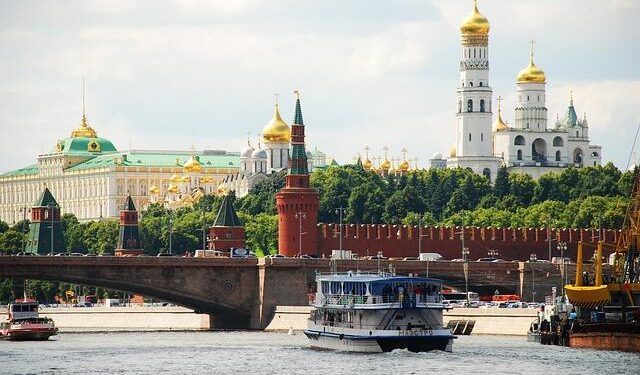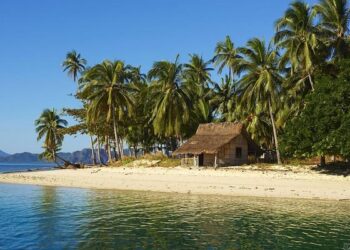Amid escalating tensions between Russia and NATO, Moscow has reportedly identified the Ă…land Islands as a strategic target in the event of armed conflict. The Ă…land archipelago, an autonomous demilitarized region under Finnish sovereignty located in the Baltic Sea, holds significant geopolitical importance given its proximity to key maritime routes and Northern Europe. This analysis explores the implications of Russia’s potential focus on Ă…land, shedding light on the broader security dynamics unfolding in the Eurasian theater.
Moscow’s Strategic Interest in the Ă…land Islands Amid Rising NATO Tensions
Moscow’s attention towards the Ă…land Islands reflects a broader pattern of strategic recalibration amidst escalating NATO-Russia tensions in the Baltic region. The archipelago’s unique geographical position-nestled strategically between Sweden and Finland-offers a potential foothold for Russia to control maritime access through the northern Baltic Sea. Analysts suggest that in the event of armed conflict, the islands could serve as a critical outpost for electronic surveillance, missile deployment, and naval operations aimed at restricting NATO’s freedom of movement. Key military advantages include:
- Proximity to vital sea lanes and air corridors
- Natural harbors suitable for rapid deployment of naval assets
- Potential for establishing anti-access/area denial (A2/AD) capabilities
The assessment table below highlights why the Ă…land Islands are distinctively positioned as a focal point in Moscow’s contingency planning:
| Strategic Element | Relevance to Moscow’s Military Objectives |
|---|---|
| Geographical Location | Control over Baltic naval choke points |
| Infrastructure | Potential to host missile batteries and radar installations |
| Political Status | Demilitarized zone but susceptible to covert militarization |
| Proximity to NATO Allies | Allows rapid response and forward staging operations |
Assessing the Military and Geopolitical Implications of Ă…land as a Potential Conflict Zone
“`html
Strategically positioned in the Baltic Sea, the Ă…land Islands have emerged as a focal point in Moscow’s contingency plans amid escalating tensions with NATO. The archipelago’s demilitarized status, codified by international treaties, presents a paradox: while it ostensibly serves as a peace buffer, its location offers unparalleled control over sea lanes and airspace crucial for both Russian access to the Baltic and NATO’s northern flank. Military analysts suggest that in the event of a conflict, Russia might prioritize the rapid deployment of advanced missile systems and electronic warfare capabilities on or near Ă…land to disrupt NATO’s operational readiness and secure a tactical advantage. This would effectively transform the islands into a forward operating base, influencing regional power dynamics and potentially drawing Finland and Sweden more deeply into the conflict sphere.
From a geopolitical standpoint, Ă…land’s status complicates the delicate balance between demilitarization commitments and the increasing militarization witnessed across the Baltic region. The islands symbolize a broader contest over sovereignty, international law, and security arrangements. The following table outlines the key military and geopolitical factors influencing the islands’ risk profile:
| Factor | Implication | Potential Outcome |
|---|---|---|
| Demilitarized Status | Limits direct militarization but ambiguous enforcement | Used as political leverage by Russia and NATO |
| Geographic Location | Controls key naval and aerial routes in the Baltic | Critical for supply and communication lines in conflict |
| International Law | Protects civilian governance but lacks military safeguards | Potential legal disputes over incursions or deployments |
| Finnish and Swedish Alignment | Growing NATO integration increases stakes | Heightened risk of escalation during conflict |
- Rapid militarization could breach Ă…land’s neutral status, escalating regional tensions.
- Electronic warfare installations could undermine NATO communication lines.
- Naval chokepoints may become contested zones, disrupting Baltic maritime It looks like your last bullet point was cut off. Here’s the completed version of the list for you:
- Rapid militarization could breach Ă…land’s neutral status, escalating regional tensions.
- Electronic warfare installations could undermine NATO communication lines.
- Naval chokepoints may become contested zones, disrupting Baltic maritime traffic and supply routes.
If you want, I can help you further develop this content or format it differently. Just let me know!
Policy Recommendations for Enhancing Nordic Security and Deterring Aggression in the Baltic Region
To fortify regional stability, Nordic countries must pursue a multi-layered approach aimed at both deterrence and resilience. Strengthening joint intelligence-sharing frameworks will be crucial to swiftly detect and neutralize threats targeting strategically sensitive locations like the Ă…land Islands. Increased investments in coastal and maritime defense infrastructure, including anti-ship missile systems and radar networks, will enhance early warning capabilities in the Baltic Sea. Additionally, prioritizing rapid deployment units trained for hybrid warfare scenarios will ensure robust responses to emerging crises without escalating tensions unnecessarily.
Key strategic initiatives include:
- Enhanced NATO cooperation with tailored defense exercises focusing on amphibious and air defense tactics around key archipelagos.
- Upgrading cyber defense mechanisms to safeguard critical communication networks from sophisticated incursions.
- Implementing regional crisis communication channels for real-time coordination across civil and military agencies.
- Deploying unmanned surveillance systems to improve situational awareness in remote maritime zones.
Recommendation Expected Outcome Implementation Timeline Joint Intelligence Platforms Faster threat detection 12 months Maritime Defense Upgrades Stronger coastal security 18-24 months Cybersecurity Enhancement Certainly! It looks like your HTML snippet ends abruptly at the last table row. Here’s the completed version of the last row and the closing tags for the table and section, with consistent styling and structure:
Cybersecurity Enhancement Improved network resilience 12-18 months And the full closing tags:
If you want, I can also help format or extend the content further. Let me know!
In Retrospect
As tensions between Moscow and NATO continue to simmer, the strategic importance of the Ă…land Islands comes sharply into focus. This analysis underscores how the islands’ unique geographic position and demilitarized status render them a potential flashpoint in any future conflict. While the prospect of war remains uncertain, the evolving military calculus in the Baltic region serves as a reminder of the delicate balance that governs Eurasian security dynamics. Observers will be closely monitoring developments in and around the Ă…land archipelago as they could signal broader shifts in regional power and international relations.
















